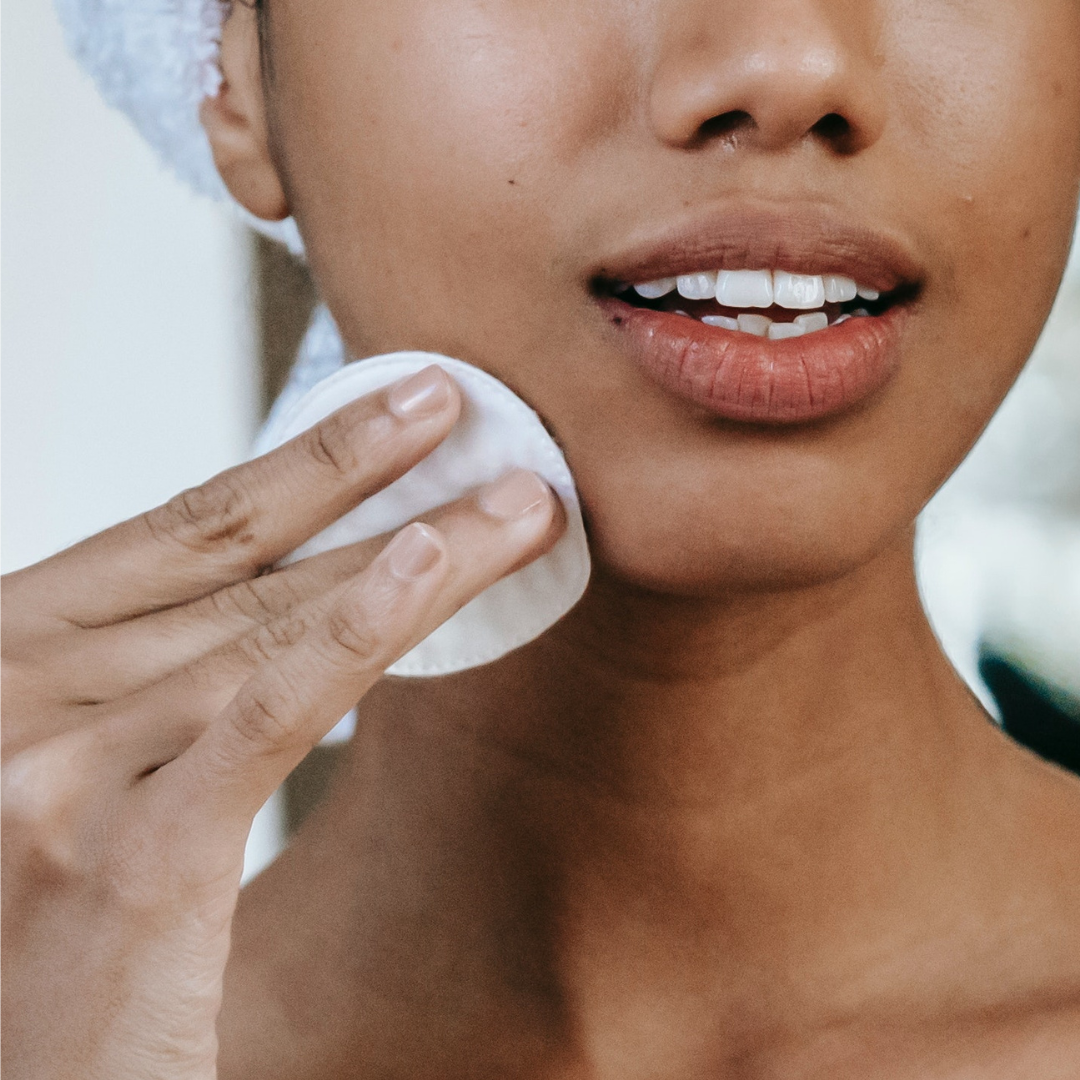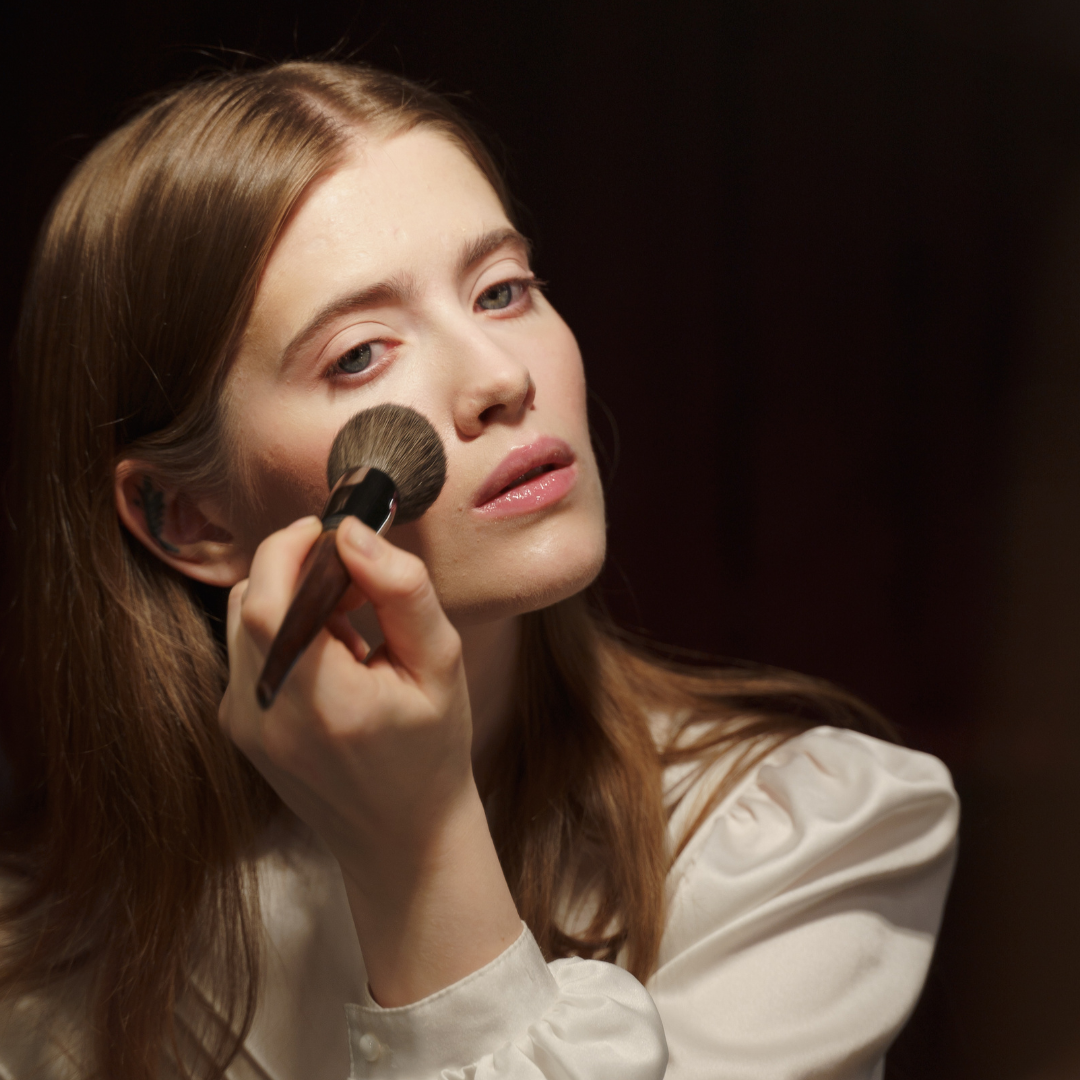Here's how skincare products work (and why some don't)
by Deborah Duffey, Chief Product Development Officer and President February 25, 2022

Skin is a complex organ and the mechanisms of treating it are also complex, but that doesn’t mean it has to be complicated. In fact, by learning just a little bit about how skin behaves and how the skincare we use interacts with it, you’ll be able to reach your goals more easily. This is important because if you’ve ever tossed out a half-used moisturizer that didn’t do what it claimed to, you know how frustrating it can be for a skincare product to fail you.
And while you may be more concerned with how your skin looks, the way it functions is just as important (and in fact, the way it looks can give you clues into how well it’s functioning). Skin is designed to protect us, but as we age it can change. This can affect how it appears and what products are right for you. But even knowing this—why don’t some products work, and how do you find the ones that do? It comes down to a combination of expectations, formulation, and even marketing claims that may or may not be trustworthy. We’ll let you know exactly what to look for in order to find effective products that actually make long-term changes to the skin.
How many times have you tried a new serum, full of excitement and hope, only to be let down when you discover that it’s not working the way you expected it to? It’s so frustrating to invest so much into a product only to be disappointed. But while skincare is very much an art as much as it is a science, there is a way for more success to be found in a serum.
Understanding how the skin functions and how skincare products work ultimately makes you a better, more informed consumer. This means less time and money spent on products that end up unused, and a quicker route to the skin you want. Let’s go in depth to learn about the skin and its layers, why some products don’t work, and how to find the products that do.
How Skin Functions
Skin is a complicated and very important organ. While most of us are concerned with how it looks, how it actually functions is much more important. Skin is responsible for protecting us from illness, regulating our body temperature, and sensing our environment, among other roles. And while all of this happens whether we religiously apply skincare products or not, the truth is that how skin looks can be an insight into how well it’s performing and how healthy it is. The skin works in many different ways, but there are a few functions that are most important to understand when it comes to skincare.
Let’s start with the skin barrier. The skin barrier is the outermost layer of our skin, and you can think of it like our body’s armor. Keeping it healthy is important because when it becomes compromised due to dryness, product overuse, or other irritation, skin can become red and sensitive and become more prone to rashes, acne, and other problems. Healthy skin means keeping a balance between using products and allowing skin to function naturally, which means using ingredients on the skin in a way that protects this skin barrier.
It’s also important to understand the way skin changes over time. Skin ages naturally as we grow older, due to our lifestyle (like diet and sun exposure), gravity, and time, and because the skin changes. Collagen production slows down in our 20s and it continues to decline over the years. Natural exfoliation also begins to decline, leading to slightly rougher skin. It also begins to feel drier and thinner. Keeping an eye out for these changes can be a good idea because your skincare routine may have to evolve over time as the skin itself also changes. You can learn more about exactly how skin ages in our blog “What contributes to signs of aging?”.
While age-related changes happen after a long period of time, skin itself is constantly being renewed. The top layer of skin is covered in dead skin cells. These eventually shed, and the cells beneath move to the top. We can take advantage of this cycle and can help our skin repair itself more quickly. For example, let’s take a closer look at skin discoloration. Pigmentation begins deeper in the skin than what we can see with the eye. That pigment moves up through the layers of the skin via skin cells and can stick around for a long time. Depending on how you treat skin, it may never return to your natural skin color, but with treatments that target deep into skin and help increase skin’s exfoliation rate, discoloration can be sloughed off quicker.
The Layers of the Skin
Let’s talk a little more about those layers. There are three main layers of skin: the epidermis, the dermis, and the subcutaneous tissue, which is made up of fat cells and connective tissue and helps insulate the body.
We’ll focus on the first two layers, the epidermis and the dermis, as this is where skincare can interact and change skin. The second layer, the dermis, contains collagen and elastin, which are responsible for the structure of skin. This is what makes skin feel tight when we’re young, and then feel looser as we age.
The epidermis is the outside layer of skin. It’s made up of various layers within itself, but for now let’s discuss it as a whole. There are several specialized cells that exist here, including cells that produce pigment, cells that protect us from infection, and cells that create and store keratin, which is a protein that helps form our skin. Healthy cells are produced in the deepest layers ofthe epidermis, which eventually move up towards the very surface of your skin and become what we see when we look in the mirror. This outside layer is called the stratum corneum.
How Skincare Interacts With Skin
How the products you apply to your skin interact with these layers—and how far they can penetrate—is important in how well they actually work.
Skincare products can only penetrate the skin so far. When the ingredients have large molecule sizes, it prevents them from infiltrating skin too deeply. In some cases, we want our skincare to only function at the very surface; for example, when using exfoliating acids. But in other cases, deeper penetration of skincare ingredients means improved results. If you recall what was just mentioned about the layers of skin, pigmentation occurs underneath the visible surface of skin. In order to target this discoloration quickly, ingredients that reach beyond the surface of the skin can be more effective by literally getting to the root of the issue. (This is why Kara Vita uses its patented nanotechnology in our products).
Like acids, some products work well at the surface of the skin. These are helpful when it comes to expediting cell turnover, and also when you want to make more immediate, short-term changes. Products that immediately plump fine lines are another example of when ingredients are working at the more superficial layers.

Why Don’t Some Skincare Products Work?
It can be disappointing to invest time, money, and hope into a skincare product only to find that it doesn’t change your skin in the way you expected. But now that you understand the layers of skin and how exactly products work, you might begin to understand that skin is complicated, and the way it interacts with products isn’t always what we expect. But why, exactly, do some products not give you the results you hoped for?
First, it may be an issue of unrealistic expectations, or even a misunderstanding of your skin’s issues. Discoloration may actually be melasma, which is much more difficult to treat than typical sunspots or other pigmentation, and will usually require a professional to diminish. If you’re bothered by pore size, that’s another situation where products can only do so much (they may be able to temporarily change pore size, but pore size is genetically fixed). These unrealistic expectations can extend into the length of time you’ve been using a product. Some products don’t begin to show signs that they are working for weeks or months. Retinoids, one of the most powerful and most recommended ingredients, can actually take about 6 months to show real results (but when results show up, they are noteworthy!).
Another reason that a skincare product might not work is because skin is so different from one person to another. A raved-about moisturizer may not change your skin in the same way it’saffected others because skin is so individualized, and what works for one person might not work for another.
Sometimes, though, a skincare product just doesn’t work. Formulating skincare and combining ingredients is an extremely scientific venture. Everything, from the source of the ingredients, the percentage, what ingredients are combined, and even the packaging, can affect how well a product works. As consumers, we rely on the companies we buy from to do the hard work, but unfortunately not every brand is trustworthy.
Marketing claims can get ahead of themselves, too. This is a big problem in the skincare industry—many terms aren’t regulated, so brands can describe their products a certain way without it meaning much in reality. Skincare products are not allowed to make drug claims, meaning that they can’t say that it will “treat hyperpigmentation”; however, they can make very similar statements like “reduces discoloration.” Similarly, products can’t “remove wrinkles” but they can “reduce the appearance of fine lines.” All of this combined can be confusing and blur how a product actually works.
It’s also important to understand what an ingredient can and can’t do. For example, one such ingredient that’s been talked about a lot recently is hyaluronic acid (although it should be noted that HA isn’t new). Hyaluronic acid can be a very good addition to a skincare routine, and while it may temporarily plump up fine lines and give it the appearance of an anti-aging product, these results don’t last. Hyaluronic acid, along with other moisturizing products, might reduce the appearance of fine lines, but it doesn’t actually turn back the clock. If you want a product to truly change skin, you need to choose products designed to actually reverse or prevent signs of aging in the first place.
How to Choose Skincare Products That Work
To meet your skin goals, it’s first helpful to evaluate your expectations. Are they realistic? Certain conditions are more difficult to treat with topical products than others. For example, loose skin cannot be entirely tightened by a cream or serum (talk to a dermatologist if this is an issue for you), and as already mentioned pore size is genetically determined for the most part. And remember that no matter what you are treating, time and dedication are absolute musts. It can take weeks to months for a product to show signs that it’s working.
After you understand what your goals are, it’s equally important to choose the right treatment. Marketing tactics and skewed results aside, let’s talk about what anti-aging products actually are, and what they should do. In order for a product to be truly anti-aging, Kara Vita believes that it needs to change the skin in the long term, not just plump up wrinkles while you’re using it. True anti-aging means that it can pause and/or reverse premature aging, and with that we’ve designated 6 functions of anti-aging that a product must abide by to be classified as “anti-aging.”
1. Has antioxidant properties
2. Has dermal repair properties
3. Increases capillary blood flow
4. Provides immuno-stimulation to the skin
5. Stimulates the epidermis for new cellular growth
6. Moisturizes and softens the skin
In addition to following these guidelines, Kara Vita also uses nanotechnology. Nanotech is a way to transform ingredients into small enough molecules that they can penetrate deeper into the skin. Our ingredients are also time released. This means that skin is exposed to effective ingredients for longer at the cellular level.
Remember that quality products aren’t cheap, but they shouldn’t be exorbitantly expensive either. Instead, look for middle-of-the-road prices from brands that invest in science.
If you’re looking for serious changes in your skin—and you’re tired of trying products that just don’t work—a product like Secret Code DNArescue™ might turn things around: a nano emulsion combined with our patented, advanced nanotechnology that has ingredients like Artemia Extract, Squalane, and Avocado Oil to protect skin from signs of premature aging. Another favorite is the Purifying Antioxidant Treatment, which uses vitamin C and retinol to help stimulate cell renewal.




